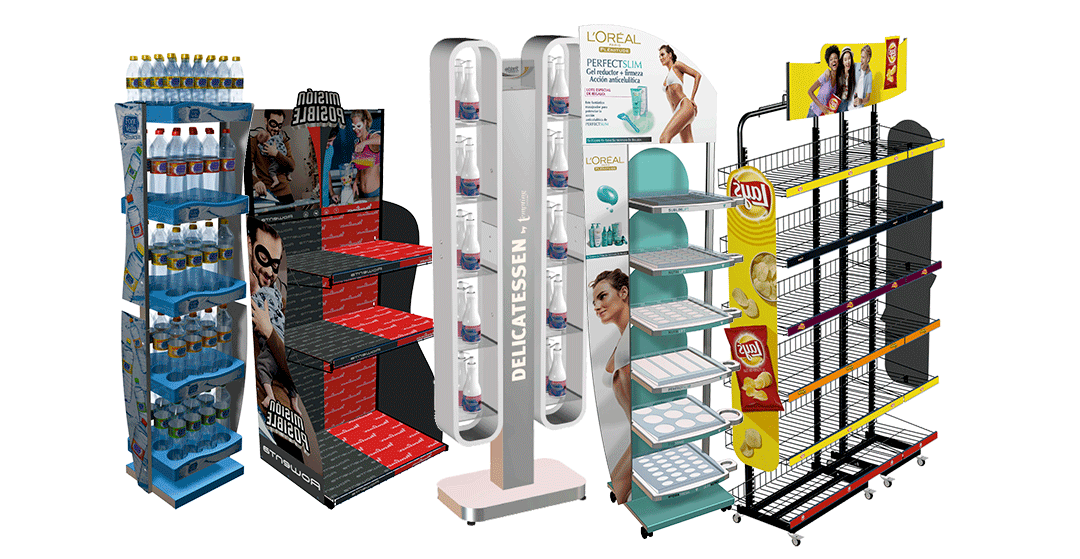
Improving product turnover at the point of sale is crucial to keeping the assortment updated, increasing sales and maintaining optimized stock management in the warehouse.
1. DATA ANALYSIS
Before making any changes to the layout of products at your point of sale, it is essential to perform a thorough analysis of your sales data. This analysis will provide you with valuable information about which products have slow turnover and which are the most profitable. Some key aspects to consider during this process are:
· Identify low turnover products: It is necessary to identify those products that have a slower turnover compared to others. This can be indicative of several factors, such as the seasonality of the product, its position in the point of sale or its relevance to customers.
· Evaluate the profitability of each product: In addition to turnover, it is essential to understand the profitability of each product, analyzing not only the gross profit margin, but also the associated costs, such as shelf space, storage costs and any discount applied.
· Identify trends and patterns: Look for patterns in your sales data that may indicate opportunities to improve turnover and profitability. For example, are there products that sell well at certain times of the year but have low demand at others? Are there complementary products that could boost sales when placed together?
2. ASSORTMENT OPTIMIZATION
Eliminate products that are not selling well and consider adding new products that are more popular with your customers. Maintain a balance between variety and rapid turnover to avoid excess inventory.
Another suitable strategy is customer segmentation to better understand their preferences and purchasing behaviors. This will help you adjust your product assortment and point-of-sale layout to meet the needs of different customer segments.
3. STRATEGIC LOCATION OF PRODUCTS BASED ON SPACE AND PROFITABILITY
Place high-turnover products in high-traffic areas within your store. Impulse-buy products should be placed in prominent locations where customers can easily see them.
Improving the profitability of space in a point of sale requires careful planning and careful management of product layout, based on turnover and sales profitability. We can't simply place the most profitable products at eye level if they happen to have low turnover due to lower need.
The first fundamental and non-negotiable step is to know the profitability of each product, as we have pointed out in point 1. The proposal consists of implementing a Merchandising Mix that combines turnover with profitability, seeking a balance between the different performances of the products. This simple approach will help us optimize the space gradually, refining the method over time and observing the results.
It is recommended to complement a highly profitable product but with low turnover, with another highly attractive or hooky product. This approach allows you to maximize sales potential while balancing customer needs and business profitability.
4. PROMOTIONS AND SPECIAL OFFERS + EFFECTIVE VISUAL MERCHANDISING WITH DISPLAY STANDS AS A GREAT TOOL
Use promotions like discounts, buy-one-get-one-free deals, or coupons to drive sales of slow-moving products. This can help move inventory faster and generate interest among customers.
To implement these promotions, create attractive displays that highlight products and encourage customers to purchase using clear, attractive signage. In addition to using hot spots such as high-volume aisles, gondola heads, the great and most versatile ally are display stands.
Displays stands are essential to achieve this objective because they direct customers' attention to specific products, increasing the possibilities of impulse purchases and improving the visibility of products on offer or promotion. Their design and strategic location can significantly influence customers' purchasing decisions, making them a key sales channel and consequently powerful weapons to increase turnover.

5. HOOK PRODUCTS AND COMPLEMENTARITY
These types of items should be distributed throughout the section, placed at fixed points, and strategically located to help the higher margin products. It is very effective to combine a highly profitable and low turnover product with another highly profitable one.
Regarding complementarity, they say that the first time the positive effect of complementarity was observed was with tomato sauce. Bottles of tomato sauce were placed next to the boxes of pasta. They managed to increase pasta sales by 300 or 400%.
Another example is the crackers in the snack area... This mechanism is so empowering that on some occasions, the complementary product sells more than the rest of the products in the section. With complementarity we will provide variety, movement, very selling breaks in rhythm, and we will provide great service to the consumer.
To conclude this article, mention that, apart from using these techniques to improve turnover at the point of sale, constant monitoring and adjustments are essential since improving product turnover is a continuous process. Keep an eye on sales trends and make adjustments as necessary. This may involve changing product placement, adjusting prices, or modifying promotions.


